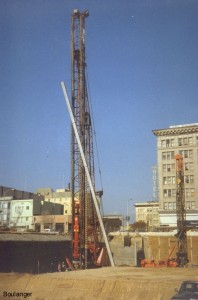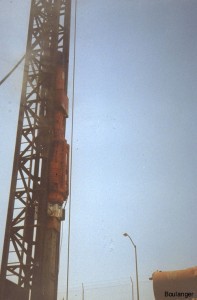|
These photos are of reinforced concrete piles being driven for the foundation of an office tower in downtown Oakland, California, 1991. Approximately 800 piles were driven at this site.
|
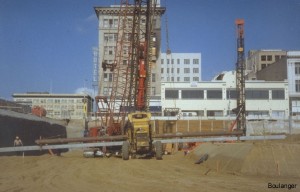
A 65-foot-long, 16 inch square reinforced concrete pile is being carried towards the pile driving rig in the background. A lifting bar is used to support the pile at several points, thereby reducing the bending moments in the pile during handling.
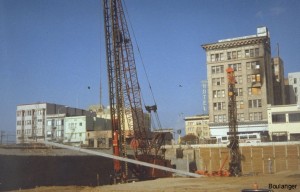
The crane lifts the pile with cables connected at 2 points on the pile. This reduces the bending moments in the pile compared to those that would develop if only one lifting cable was used.
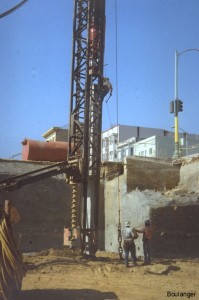
The pile is partly driven at this point. The auger drill alongside the pile was used to predrill a hole to a depth of about 40 feet. The pile was then driven in the predrilled hole. Predrilling was necessary because the upper 40 feet included zones that were too dense for a pile to be driven through without a high chance of damaging the pile. A worker is placing a new “cushion” (stack of plywood sheets in this case) between the pile head and diesel hammer. The cushion reduces the impact stresses on the pile, which can govern design of the pile.

Recordings are being taken of strain and acceleration (converted to force and velocity) at the pile head (top) during driving. These dynamic measurements can be used to identify pile damage or in analyses that provide an estimate of the pile’s axial load carrying capacity.

